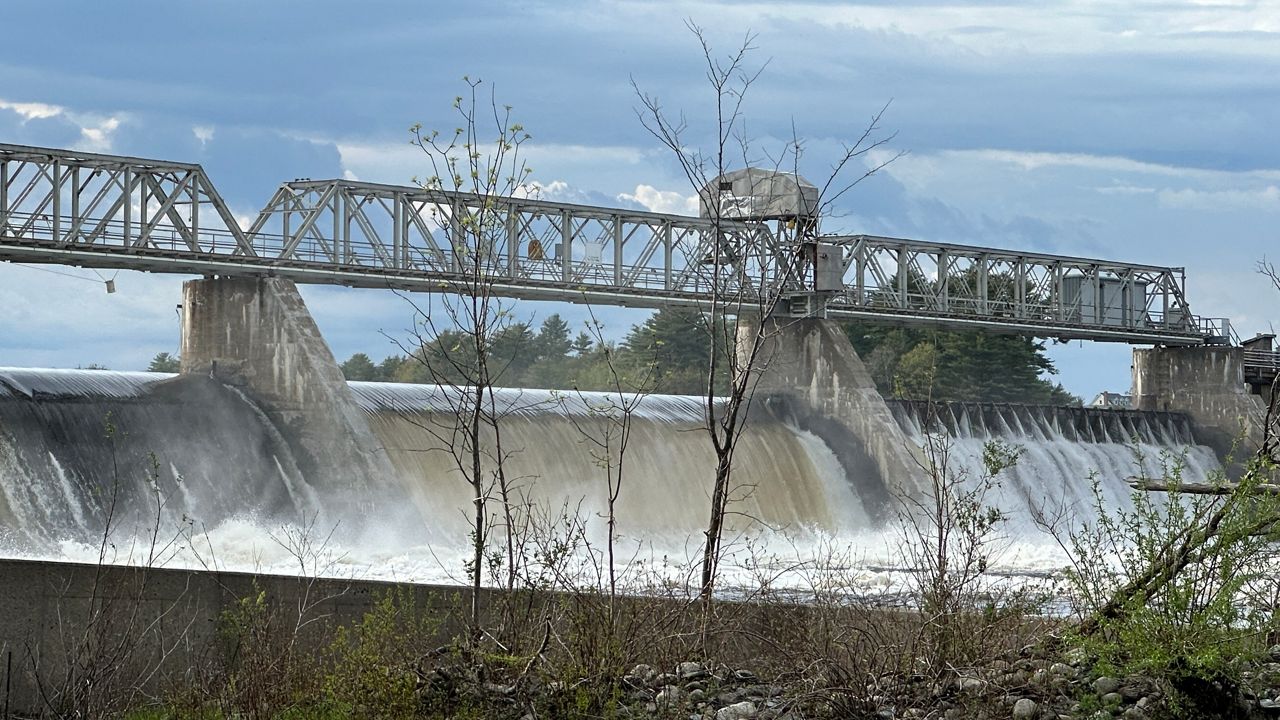Maine environmental groups hope to convince federal regulators next week that four dams on the Kennebec River should be removed — or at least made less detrimental to fish and other species.
The Federal Energy Regulatory Commission will be in Waterville and Augusta to take public comments on a draft environmental impact statement for the four dams: Shawmut, Lockwood, Hydro-Kennebec and Weston.
Environmental groups say the dams harm salmon and other species, while the local chamber warns that removal would be catastrophic to the local economy.
“The four dams between Waterville and Skowhegan have tremendous negative impact on the health of this river,” said Landis Hudson, executive director of Maine Rivers.
All four are owned by Brookfield Renewable or one of its subsidiaries, which said in a statement that they are pleased with FERC’s support for the “pro-species measures for the lower Kennebec projects.”
“This proposal, like all of our relicensing proposals, is the product of many years of study and consultation with federal and state resource agencies, as well as the public, and is intended to carefully balance public, economic, energy and natural resource interests,” according to the statement from David Heidrich, a company spokesman.
A spokeswoman for FERC said the commission has not given “any kind of approval in this proceeding” but that the draft impact statement is part of the consideration for a final decision.
From the perspective of the Natural Resources Council of Maine, the current proposal for upstream fish lifts and other measures to keep fish out of the turbines, fall far short.
In a recent blog post, NRCM said it plans to ask FERC to set performance standards for “all-sea run fish species” and set a requirement that those standards be met within two years. They also want to require new screens on the turbines at all four dams and at least two upstream fish lifts at each dam.
“We know single fish lifts fail to pass Atlantic salmon and shad effectively,” according to the blog, which noted that NRCM staff are still working on formal comments.
Lastly, they will ask FERC to give “serious consideration of dam removal.”
Hudson pointed to the rebirth of the Kennebec in Augusta following the removal of the Edwards Dam in 1999.
“The Kennebec is a magnificent, powerful, important river that has tremendous potential for restoration,” she said.
But others worry that dam removal would have a significant economic impact on central Maine. A September 2022 study commissioned by the Mid-Maine Chamber of Commerce, which is based in Waterville, concluded that the four dams and the two mills they support, provide 1,284 jobs with nearly $159 million in employee earnings.
“The dams support 40% of the state’s remaining paper mill industry, and average earnings per job more than double that of average earnings per job across all industries in all the counties,” according to the report by Camoin Associates of Saratoga Springs, N.Y.
Hudson said she hopes people look at the whole picture of what the dams produce and what they impact.
She said while much of the attention is focused on endangered salmon, there are dozens of other species of fish and birds that rely on a healthy river and that the river also feeds the Gulf of Maine.
She said the success stories of dam removal in Augusta and Westbrook show that rivers can recover.
“Considering the damage they inflict on the river, are they worth it?” she said.
The meetings are set for 7-9 p.m. Tuesday at the Summit Room at Thomas College, 180 West River Road in Waterville and 10 a.m. to 12 p.m. Wednesday at the Augusta Civic Center, 76 Community Drive, Augusta.





